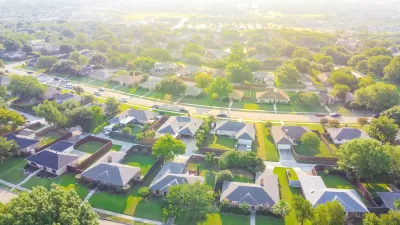Minneapolis has become an inspiration to other cities about how to successfully challenge NIMBY factions that oppose density and zoning reform.

Philip Kiefer traces the path Minneapolis took to passage of a plan last year that eliminates single-family zoning in the city. A city council member who supported increased density was an important start, but the YIMBY (Yes in My Backyard) momentum was bolstered by some creative grassroots activism, says Kiefer:
The way [John] Edwards sees it, the NIMBY [Not in My Backyard] talking points — concerns over neighborhood character and belligerent renters — are a kind of propaganda, "so it’s time for some counter-propaganda." The early Neighbors for More Neighbors memes were done in the style of National Parks advertisements. "Remember: Only you can prevent sprawl," says a beaver in a park ranger hat. "Help keep America green. End single-family zoning."
The Neighbors for More Neighbors advocacy group organized members to show up at public meetings, community events, and neighborhood walks, and the outreach paid off when the city council passed the Minneapolis 2040 plan in December.
"Without the YIMBYs, the Neighbors for More Neighbors organizers think, the eventual plan would have been substantially watered-down, or consensus never would have emerged. As Edwards put it, the YIMBYs had city council 'looking over both shoulders,'" writes Kiefer.
Seattle activists looked to Minneapolis as they cranked up their own zoning reform efforts. Although they faced a number of setbacks and fierce opposition, the YIMBY contingent came together and support for increased density was high, says Kiefer. In March, the city council passed the Mandatory Housing Affordability legislation to allow larger developments and to promote affordable housing.
"The real work wasn’t necessarily convincing the other side, [Patience] Malaba said. It was persuading enough people that changing some thing as dry as zoning codes could have an outsized influence on their homes, their neighbors, and their booming city," notes Kiefer.
FULL STORY: Here comes the neighborhood

Alabama: Trump Terminates Settlements for Black Communities Harmed By Raw Sewage
Trump deemed the landmark civil rights agreement “illegal DEI and environmental justice policy.”

Planetizen Federal Action Tracker
A weekly monitor of how Trump’s orders and actions are impacting planners and planning in America.

How Atlanta Built 7,000 Housing Units in 3 Years
The city’s comprehensive, neighborhood-focused housing strategy focuses on identifying properties and land that can be repurposed for housing and encouraging development in underserved neighborhoods.

In Both Crashes and Crime, Public Transportation is Far Safer than Driving
Contrary to popular assumptions, public transportation has far lower crash and crime rates than automobile travel. For safer communities, improve and encourage transit travel.

Report: Zoning Reforms Should Complement Nashville’s Ambitious Transit Plan
Without reform, restrictive zoning codes will limit the impact of the city’s planned transit expansion and could exclude some of the residents who depend on transit the most.

Judge Orders Release of Frozen IRA, IIJA Funding
The decision is a victory for environmental groups who charged that freezing funds for critical infrastructure and disaster response programs caused “real and irreparable harm” to communities.
Urban Design for Planners 1: Software Tools
This six-course series explores essential urban design concepts using open source software and equips planners with the tools they need to participate fully in the urban design process.
Planning for Universal Design
Learn the tools for implementing Universal Design in planning regulations.
Jessamine County Fiscal Court
Caltrans
Institute for Housing and Urban Development Studies (IHS)
City of Grandview
Harvard GSD Executive Education
Toledo-Lucas County Plan Commissions
Salt Lake City
NYU Wagner Graduate School of Public Service





























